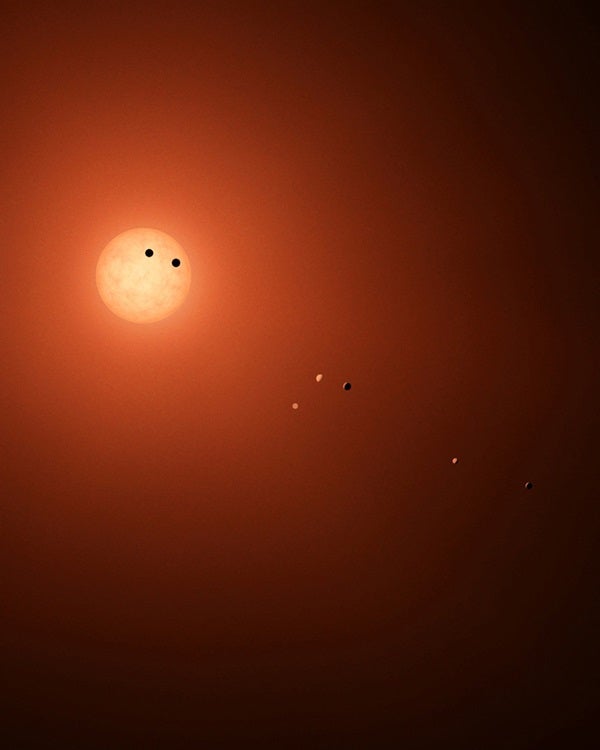Earlier this month, a team including the European Southern Observatory and NASA’s Spitzer telescope team announced that the previously-discovered TRAPPIST-1 hosts seven potentially habitable Earth-size planets. (It was once thought to only have three.)
As it turns out, NASA’s Kepler space telescope has also been observing TRAPPIST-1 since December 2016 and now that data is available.
Kepler studied the dwarf star’s change in brightness due to transitioning planets for 74 days during a period known as the K2 Campaign 12. That research period gave researchers the longest, near continuous set of observations of the dwarf star yet. The information will help teams look at the planets’ gravitational interactions as well as continue the search for even more undiscovered planets.
However, Kepler almost missed the opportunity to study TRAPPIST-1. Before news broke in May 2016 about the planets orbiting TRAPPIST-1, Kepler was set to study a different region of space. Once they learned about the planets, though, the teams at NASA and Ball Aerospace & Technologies Corp. worked quickly to rework calculations and commands so the spacecraft’s operating system would adjust for Campaign 12 and study the new star system.
In a press release, Michael Haas, science office director for the Kepler and K2 missions at Ames said scientists were excited about the opportunity to study TRAPPIST-1 and had “submitted proposals for specific targets of interest in that field.”
“The unexpected opportunity to further study the TRAPPIST-1 system was quickly recognized and the agility of the K2 team and science community prevailed once again,” Haas said.
The K2 mission lasted from December 15, 2016 to March 4, 2017 and provided researchers will information to work with in measuring the planets, working out the orbits, attempting to figure out the mass of the farthest planet, and to learn more about the magnetic activity of TRAPPIST-1.
“Scientists and enthusiasts around the world are invested in learning everything they can about these Earth-size worlds,” said Geert Barentsen, K2 research scientist at NASA’s Ames Research Center at Moffett Field, California. “Providing the K2 raw data as quickly as possible was a priority to give investigators an early look so they could best define their follow-up research plans. We’re thrilled that this will also allow the public to witness the process of discovery.”
Any measurement updates and additional discoveries in the K2 data will help astronomers plan for follow-up studies of TRAPPIST-1 world using NASA’s James Webb Space Telescope.










